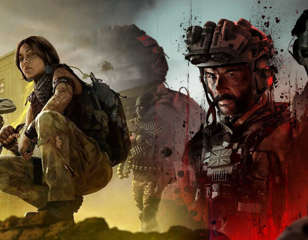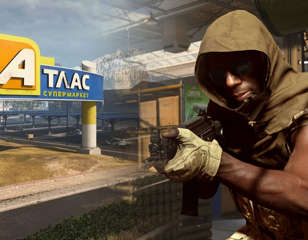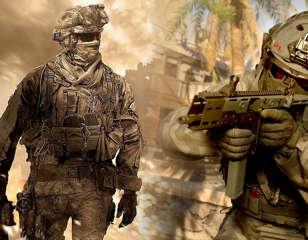Could Microsoft's ABK Buyout Lead To The CDL Franchise Model Being Scrapped?
With Microsoft taking charge of Activision Blizzard, will the existing Call of Duty League model be scrapped in favour of a superior structure?

Jonno Nicholson
19th Jan 2022 17:30
Katy Eyre | ESPAT Media | Call of Duty League

On January 18, 2022, the gaming and esports industries were left reeling as Microsoft announced that it would be acquiring Activision Blizzard for approximately $70 billion. The deal means the technology giant will now house the Call of Duty franchise, much to the curiosity of the community. Now in its third year, the Call of Duty League (CDL) has attempted to utilise a range of formats in a bid to capitalise on a geo-located franchise model.
It’s fair to say that the switch from the hugely popular CWL format hasn’t been met with many seals of approval, with constant calls for the preferred structure to make a return. With Microsoft and 343 Industries collaborating to re-launch the Halo Championship Series (HCS) with huge success, the door has opened for the company to partner with the CDL, and the potential to usher in yet another new era is certainly there.
With that said, could the franchise model of the CDL be scrapped entirely in favour of a new system combining the old with the new to make the most of both formats that both have their strengths and weaknesses?
Starting From Scratch

While the concept of having localised markets similar to how NFL franchises work sounds like a great idea for Call of Duty, it quickly became clear that fans were not on board with the idea of closing off the highest tier of competition to a select few who have bought their place. With limited spaces for players, the talent pool shrunk exponentially, causing several legends of the game to hang up the controller due to a lack of support for amateur leagues and competitions.
Starting fresh with a complete overhaul of the existing format thanks to Microsoft’s acquisition could well be the way to go. But how could you create a format that puts investors at ease while catering to the often-vocal fan base that’s never afraid to share their opinions?
A lot of work has gone into creating an innovative yet somewhat familiar format for the CDL to follow but despite the additions of tournaments where top amateur talent can face off against the best in the world, players and spectators are still dissatisfied with what’s on offer. Having seen what Microsoft and 343 Industries has done with Halo Infinite, perhaps it’s time to take a leaf out of their playbook?
New May Not Be Better
Having seen the successes of older formats continue to perform well for other esports titles, it’s easy to say that reverting to a much-preferred structure will achieve success. From the outset, Activision Blizzard has heavily invested in attempting to make the league somewhat successful but throwing out all of the franchises and plans that have already been put into place could do more harm than good.
With LAN events slowly returning as the world recovers from the pandemic, it would be a shame to totally dismiss a format that never got the opportunity to thrive in front of a live audience. The very least the current formula is owed is the 2022 season to take place before taking any kind of action before Microsoft takes charge in mid-2023. Due to the nature of the deal, the franchise model is likely to remain until the end of 2023 and by then, the format may have evolved to a point where it's somewhat comparable to the simplistic combination of pool play followed by a high-stakes double-elimination bracket to determine the eventual champion.
The Ideal Solution

With the demand for a more familiar format, 2024 will be the perfect opportunity for Microsoft to spark the revival of the CDL. Rather than completely undoing the past few years, keep hold of all 12 franchises that will guarantee a place in Major tournaments alongside in-game items for fans to purchase. Allow a small portion of the money made through microtransactions to contribute to prize pool increases and the CDL already sounds a lot better.
If the franchises are already booked into the familiar structure of pool play, the top four teams from Challengers (One from APAC, one from Europe, and two from North America) can be drawn into the pools, giving them the opportunity to prove their worth against the very best competition available. The round-robin matches will determine the top two seeds to qualify for the winner’s bracket while the bottom two can fight for survival in the elimination bracket, meaning their tournament isn’t over once pool play has concluded. Eventually, the teams will be whittled down to an eventual champion.
Just a few changes that combine the very best from the CDL and the CWL could make all the difference to Call of Duty esports as the scene seeks to rebuild after several months of neglect from the developer. This is where Microsoft comes in. With the tech giant now at the helm of all Call of Duty studios, it can go down the route of potentially releasing a standalone multiplayer title similar to Call of Duty: Mobile to be used for competitive play, or it could put an end to annual releases, giving developers additional time to release a polished product that isn’t riddled with bugs and glitches for the first few months of its launch.
Although many people aren’t a fan of the CDL and its model, scrapping it entirely could deal more lasting damage rather than creating what could be a highly sought-after format for it to follow in the coming years.

About The Author
Jonno Nicholson
Jonno is a freelance journalist at GGRecon, specialising in Call of Duty and its esports scene. His work can also be found on Esports Insider, Gfinity, Millenium, and a range of other esports publications.

























